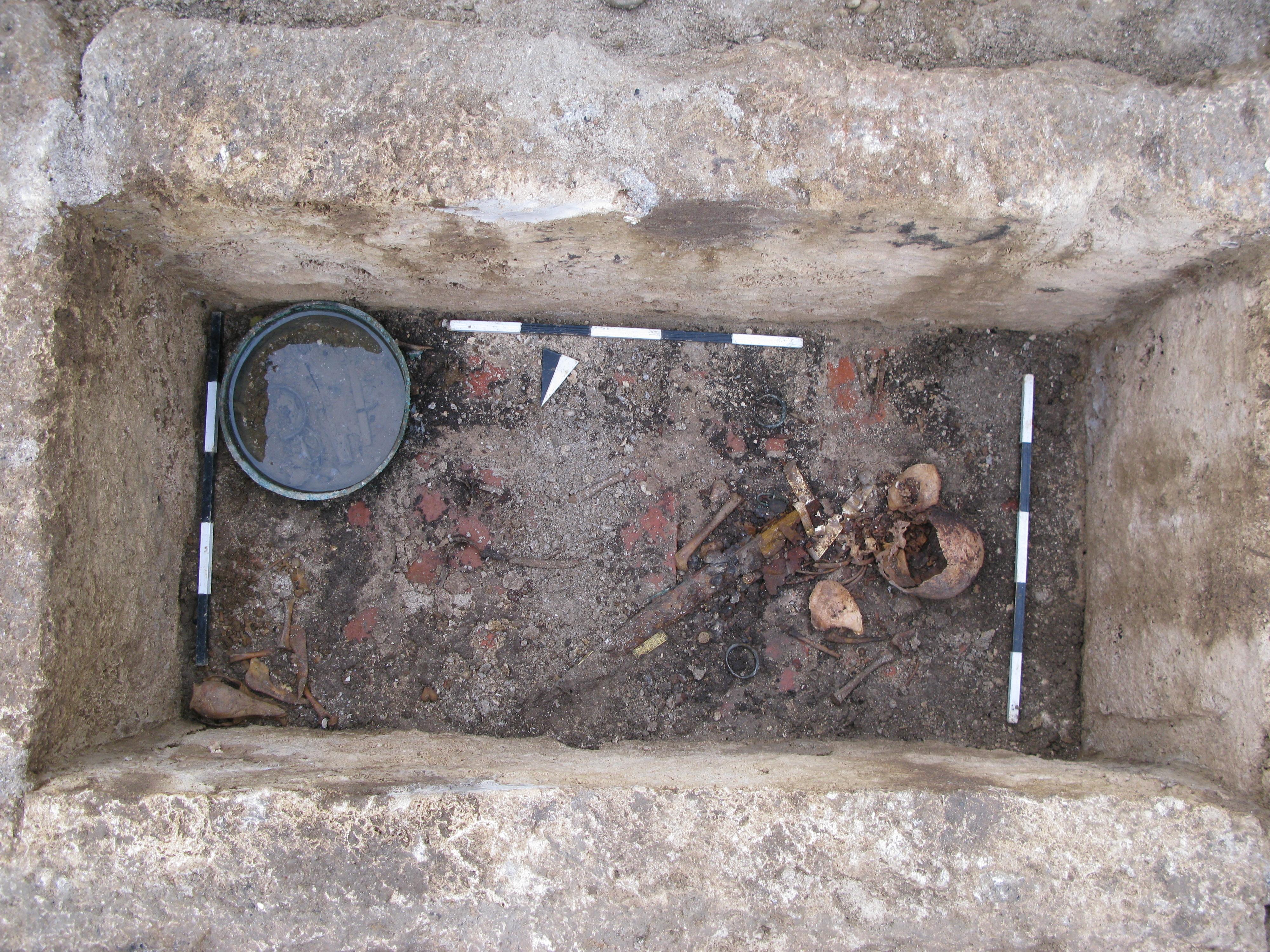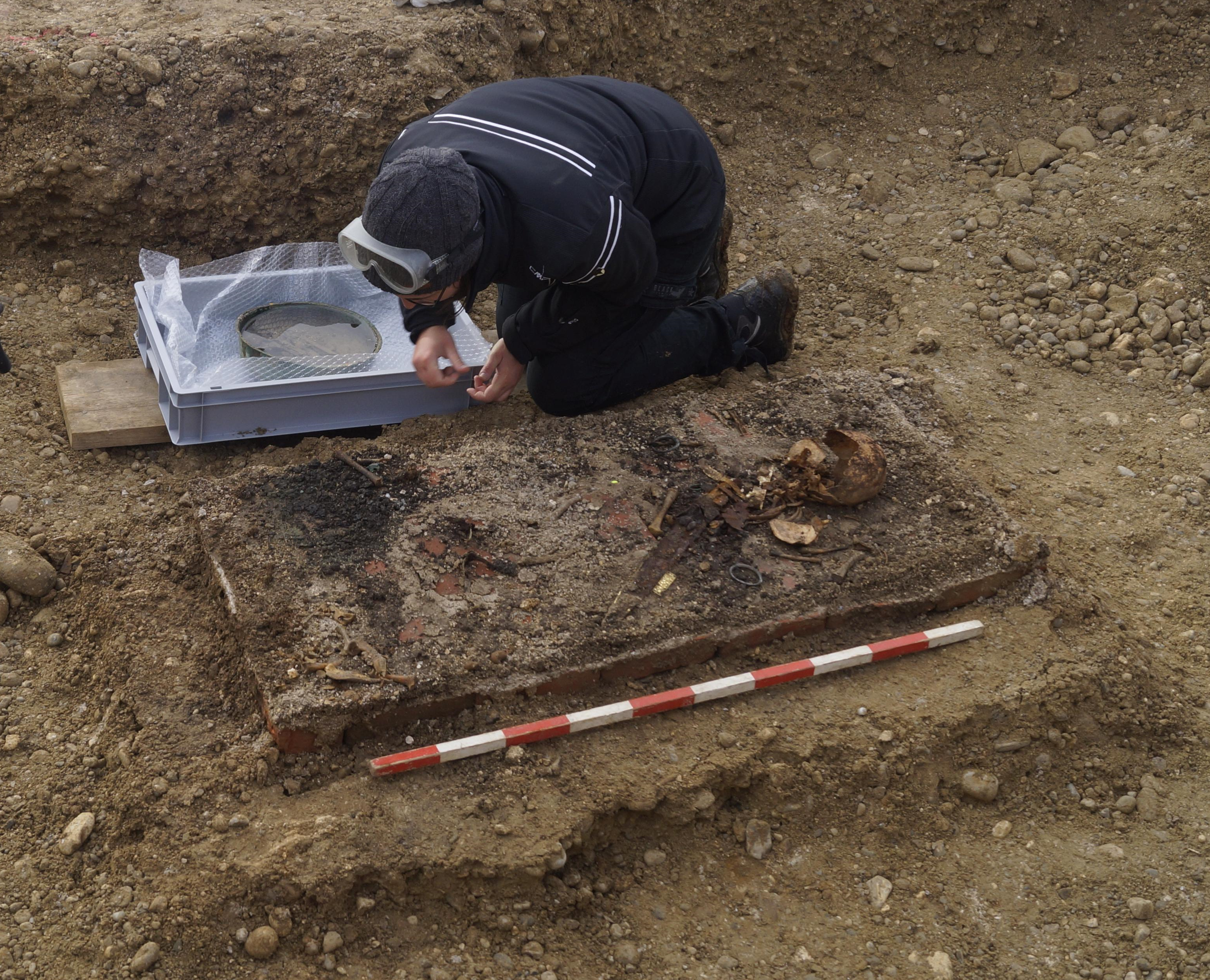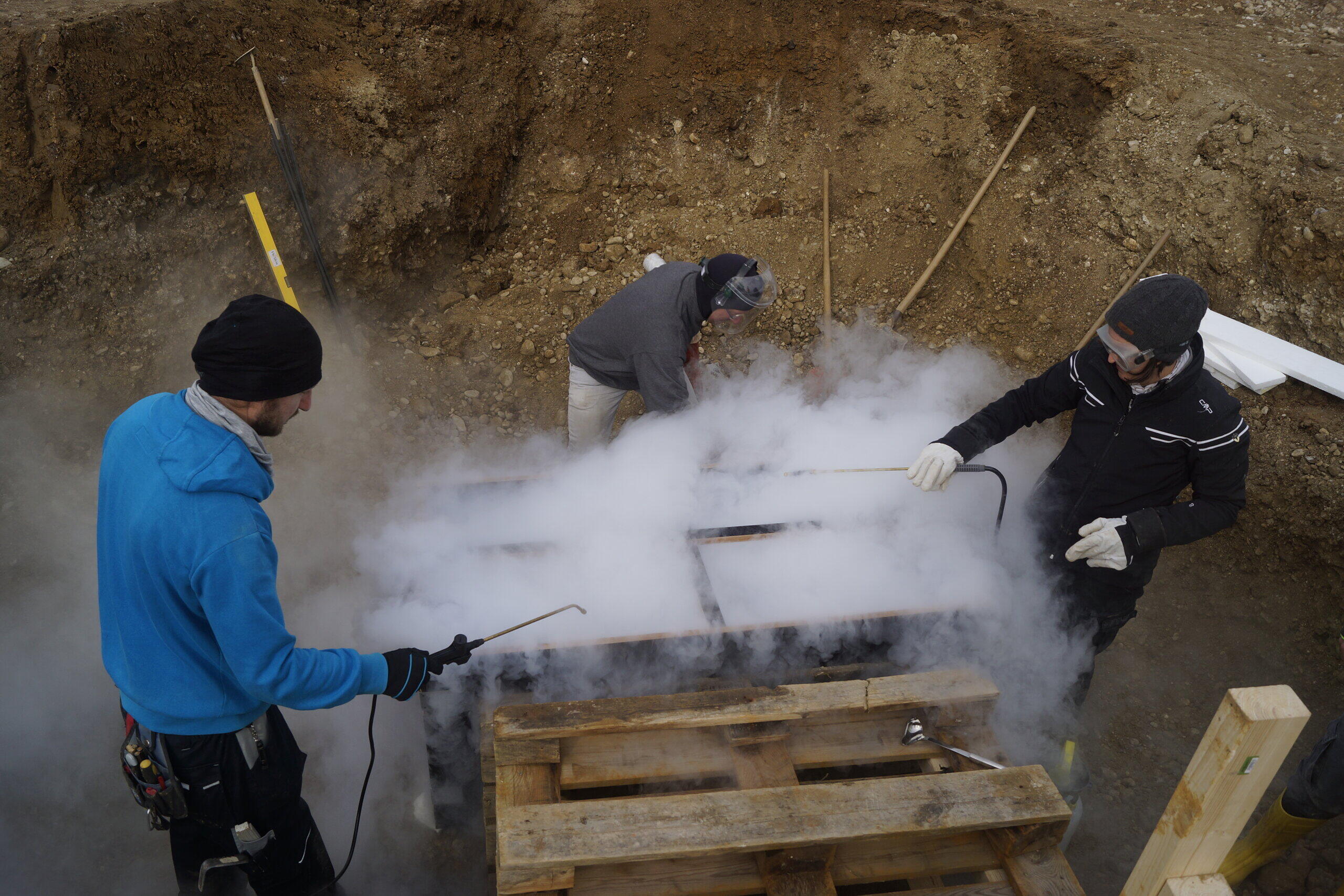Welcome to DU!
The truly grassroots left-of-center political community where regular people, not algorithms, drive the discussions and set the standards.
Join the community:
Create a free account
Support DU (and get rid of ads!):
Become a Star Member
Latest Breaking News
Editorials & Other Articles
General Discussion
The DU Lounge
All Forums
Issue Forums
Culture Forums
Alliance Forums
Region Forums
Support Forums
Help & Search
Anthropology
Related: About this forumFlash-frozen 7th c. boy warrior grave thawed

Archaeologists have begun a conservational thaw of the 7th century grave of an elite boy that in a scientific first, was removed from its find site in a single flash-frozen block.
A stone chamber grave was discovered last October at the site of a new development in Tussenhausen, Bavaria. The archaeological survey revealed the remains of a building dating to the Roman era. That building was reused some centuries later as the final resting place of a young boy who had been buried in a chamber grave with a brick floor and thick stone slab walls and ceiling. His skeletal remains were found wearing rich accessories. The skeleton of a dog lay at his feet. The presence of baby teeth indicates the child was no more than 10 years old when he died, but he was well-armed despite his tender age. A sword and weapon belt adorned with gold studs marked him as a child of the wealthy warrior elite. Silver bracelets, spurs, sheet gold crosses and a bronze basin were also found in the grave.

The stone walls and ceiling of the tomb were so tightly joined that no sediments had penetrated the interior in 1,300 years. Because of this, the grave was in excellent condition, with remnants of organic materials including leather and fabric visible in the fill. This stroke of good luck posed a challenge to conservators, however, because the remains were not encased in relatively stable soil that can be cut out in a block for the kind of laboratory excavation that can preserve even the smallest traces of archaeological material. Without load-bearing fillers, the precious, fragile remains were in danger of being jostled and damaged in transport.

To preserve the materials with as little deterioration as possible, archaeologists from the Bavarian State Office for the Preservation of Monuments (BLfD) devised a new technique. The stone walls were removed, replaced with wooden panels for temporary protection. A plate was pushed under the grave over the brick floor. The grave was wetted down layer by layer, and each layer flash-frozen with liquid nitrogen at -320F. The low temperature of liquid nitrogen ensures the water hardens instantly into ice without expanding or forming ice crystals as it would if it were frozen at a higher temperature. The soil around it was then cut away with heavy machinery and the whole frozen block lifted out by crane. The whole process took 14 hours, from 3 AM to 5 PM.
More:
http://www.thehistoryblog.com/archives/64490
InfoView thread info, including edit history
TrashPut this thread in your Trash Can (My DU » Trash Can)
BookmarkAdd this thread to your Bookmarks (My DU » Bookmarks)
4 replies, 961 views
ShareGet links to this post and/or share on social media
AlertAlert this post for a rule violation
PowersThere are no powers you can use on this post
EditCannot edit other people's posts
ReplyReply to this post
EditCannot edit other people's posts
Rec (15)
ReplyReply to this post
4 replies
 = new reply since forum marked as read
Highlight:
NoneDon't highlight anything
5 newestHighlight 5 most recent replies
= new reply since forum marked as read
Highlight:
NoneDon't highlight anything
5 newestHighlight 5 most recent replies
Flash-frozen 7th c. boy warrior grave thawed (Original Post)
Judi Lynn
Jul 2022
OP
So much to see every day. Surely wish I had more time! It's all completely new to me.
Judi Lynn
Jul 2022
#3
UpInArms
(51,813 posts)1. Thank you
For all the wonderful stories you bring to us … ![]()
Judi Lynn
(162,406 posts)3. So much to see every day. Surely wish I had more time! It's all completely new to me.
Thank you, UpInArms. ![]()
Baked Potato
(7,733 posts)2. Amazing! Thank you. Nt
Judi Lynn
(162,406 posts)4. Thank you, Baked Potato. 👋